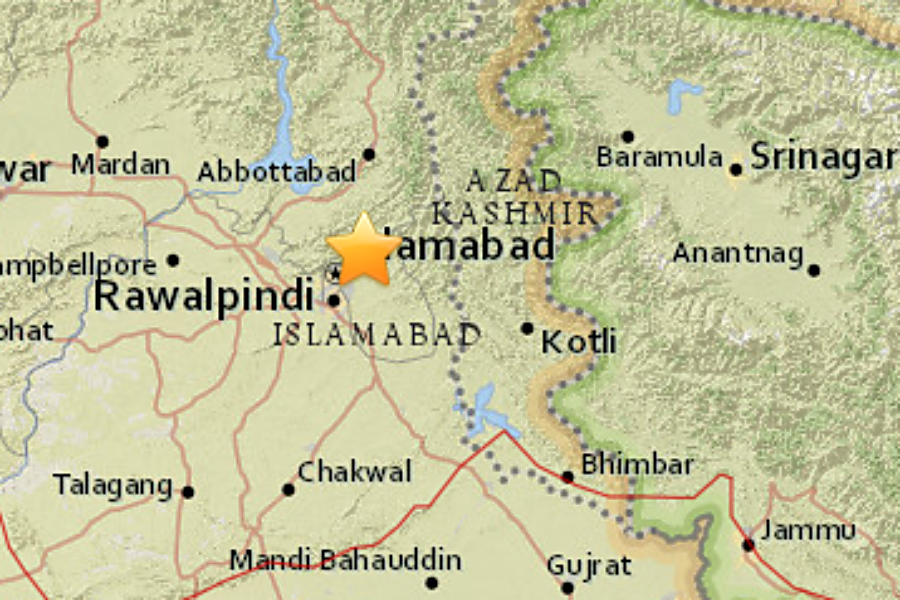Pakistan jolted by magnitude 5.1 earthquake
Loading...
| Mansehra, Pakistan
Authorities in Pakistan say an earthquake that jolted the country early this morning has killed three people.
The U.S. Geological Survey says the magnitude-5.1 quake rocked Islamabad and elsewhere in northwest Pakistan at 2 a.m. Saturday. The epicenter was 15 kilometers northeast of Islamabad.
The tremor was so strong that people came out of their homes and started reciting verses from the Quran.
Senior police officer Akhtar Hayat Khan said the roofs of three homes caved in because of the earthquake in a village on the outskirts of Abbottabad, killing three people. He said police did not receive any other reports about damage in the region.
Pakistan and the Himalaya region, along an active continental plate boundary, is often hit by earthquakes. In September 2013, a magnitude-7.7 quake struck Pakistan's Baluchistan province, killing at least 376 people.
Follow up on Nepal
Meanwhile, an association of trekking agencies in Nepal on Friday criticized an assessment report that found trails around Mount Annapurna safe for hikers following April's devastating earthquake.
Kit Miyamoto of the California-based engineering firm Miyamoto International said on Thursday that the only hazards were found at three spots and appeared to predate the quake. It said that only about 3 percent of the accommodations on the 200-kilometer (125-mile) route were damaged by the April 25 earthquake.
The quake, coupled with another in May, killed 8,898 people.
Nepal's government, hoping that visitors will return in September when tourist season begins, welcomed the assessment.
However, mountaineering and trekking operators said that the study was done in haste, covering a huge area and without consulting anyone in the business.
"The assessment should have been more detailed taking much longer time, because it covers such important safety issue," said Keshav Pandey of the Trekking Agencies' Association of Nepal.
Pandey said the study should have coordinated with the trekking operators who have good knowledge and experience of the area.
The trail around Mount Annapurna gets about 115,000 foreign trekkers —some 60 percent of all hikers who travel to Nepal every year. A favorable safety report makes it easier for visitors to get travel insurance — a major concern for people planning their trip to Nepal.
The Miyamoto team is also assessing routes on the foothills of Mount Everest, and expects to complete work in two weeks.







